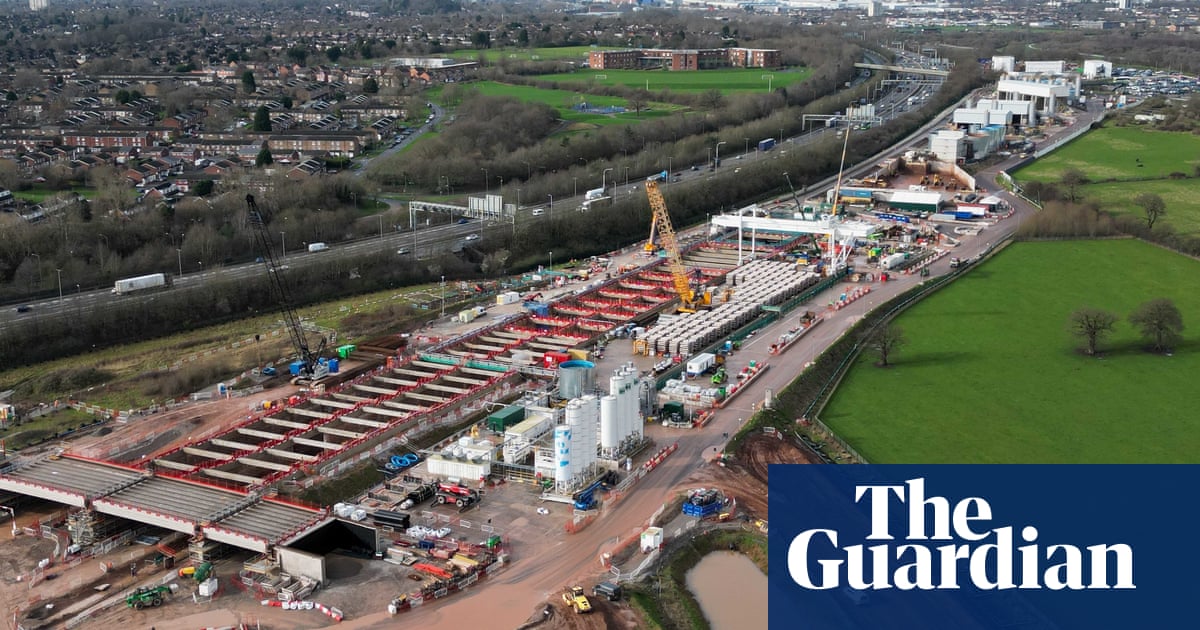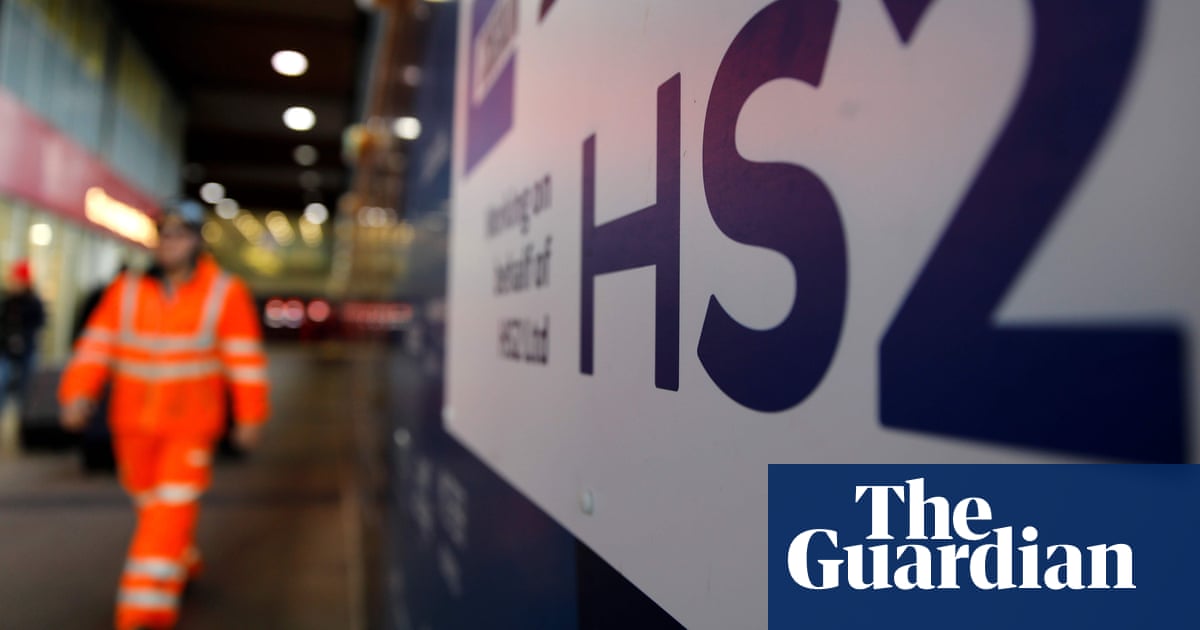
Plans for a 21-mile cycleway linking Birmingham to Coventry alongside the HS2 line have been described as a “no-brainer” for health, wellbeing and economic growth in the region.
In a letter seen exclusively by the Guardian, Andy Street, the mayor of the West Midlands, wrote to the government-owned HS2 Ltd this week asking that it keep haul roads and maintenance tracks alongside the rail route for conversion to a future cycleway, rather than dismantling them. Street said he has the backing of all local authorities along the route to connect these paths with local roads, along with a plan to fund it, and said the plans will “maximise HS2’s benefits for the region”.
The HS2 cycleway was conceived a decade ago as an “emerald necklace” linking communities from London to Birmingham, along the railway line. With HS2’s future uncertain, and because of its complexity, much of the cycleway may never be realised.
Street said: “I’m determined to maximise HS2’s benefits for the region and a high-quality active travel route, enabled by HS2 construction and supported by local authorities, is a no-brainer for so many reasons.
“This is an opportunity to connect cities like Birmingham and Coventry but also improve local and rural connectivity in Solihull and Warwickshire. The proposed route runs near growth zones in east Birmingham and Solihull, as well as the investment zone in Birmingham’s knowledge quarter, meaning we can use this infrastructure to provide access to the high-quality green jobs of the future”.
The cycleway would offer up to five times greater returns on investment than the railway itself, according to analysis commissioned by HS2 Ltd in 2014 and obtained via freedom of information requests. Safe, continuous cycling and walking routes are most valuable in densely population areas such as Birmingham for health, access to work and education, and decongestion.
The analysis estimated returns at between £4.7 and £14.8 per £1 spent for the urban Birmingham section, and between £2.44 and £7.05 for Kenilworth and Coventry. There is no estimate of the cost of the route, with work not expected to start until 2027. Improvements to a further 3.5 miles of 1930s cycleway would connect the route to the centre of Coventry.
The Department for Transport has been retroactively introducing walking and cycling paths on HS2’s bridge and tunnel designs to link active travel networks across the railway after criticism about HS2 Ltd’s failure to do so. These will make cycleways such as the West Midlands route possible, once the line is complete.
Street added: “Frankly, it helps our health and wellbeing agendas, our net zero targets and our growth targets. When HS2 Ltd made clear what was possible if the region got on board – it was an opportunity we couldn’t pass up.”
Funding is likely to come in part from city region sustainable transport settlements, which for the West Midlands will total £2.46bn, at least £250m of which will be allocated to active travel. Regional and local authorities, as well as developer and HS2 levies, levelling up and other direct funding will contribute.
Adam Tranter, the mayor’s cycling and walking commissioner, said: “When they build new major infrastructure in countries like the Netherlands they always look at how they can improve active travel and the UK should be no different. Ever since the first report showing a HS2 cycle route was possible, I’ve been keen to try and make this a reality. I’m pleased everyone has come together to be clear this is something we want to happen.”
An HS2 Ltd spokesperson said: “It has always been part of our vision to deliver active travel provision and upgrade routes along the route of HS2 between London and the West Midlands. HS2 provides a fantastic opportunity to reconnect landscapes and create new footpaths and cycleways, with many of our design proposals including enhanced local community connections.
“We are currently looking at opportunities in 20 locations between London and Birmingham, including pilots to consider repurposing haul roads and construction access points, which would all contribute to the government’s active travel aspirations.”












